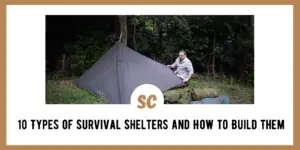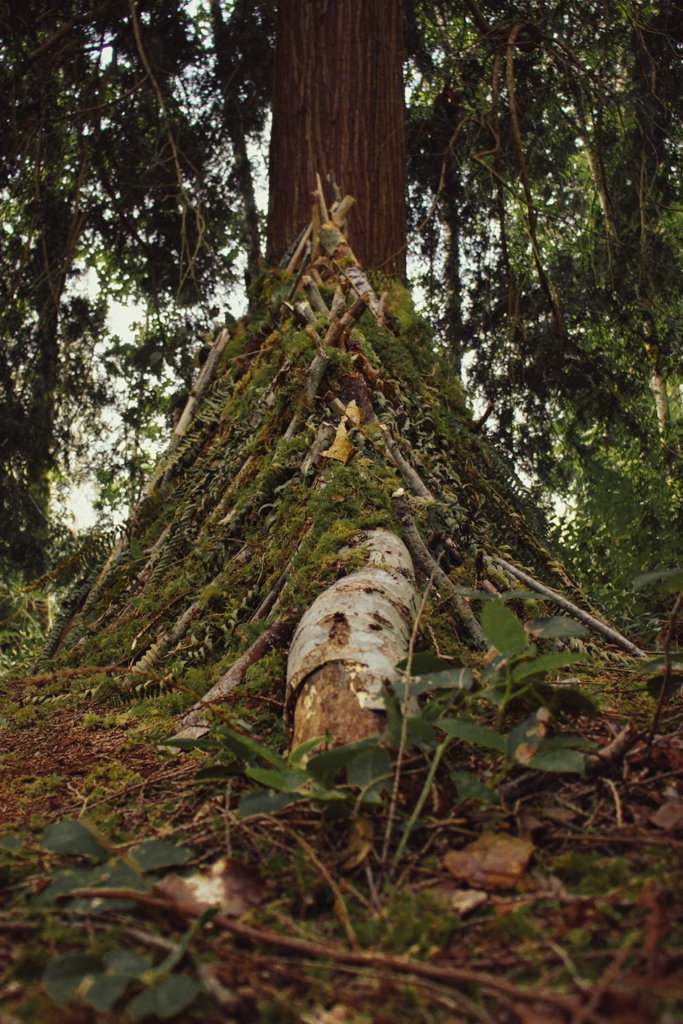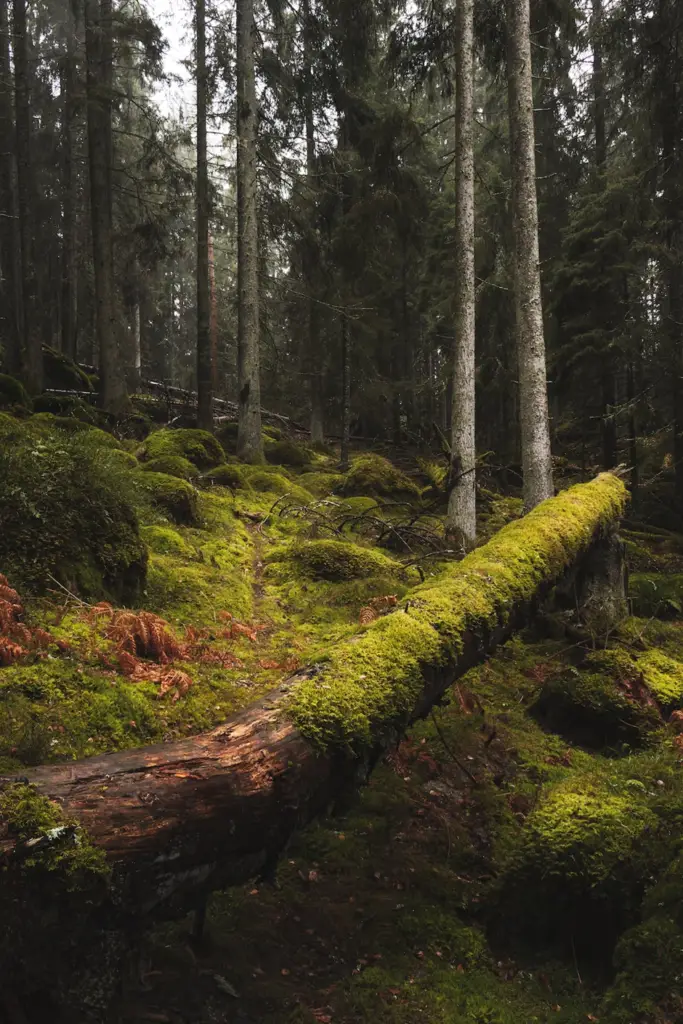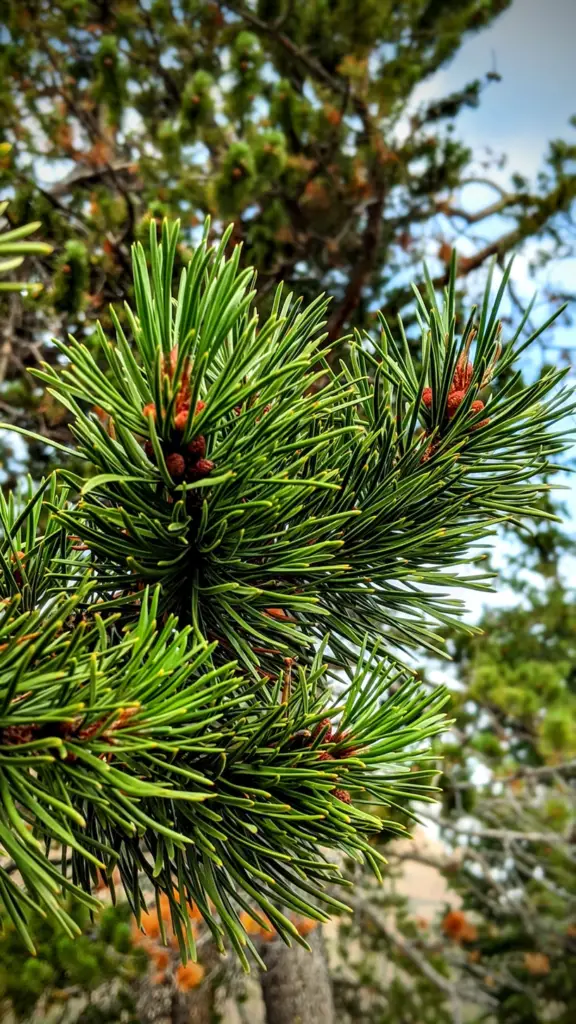I’ve always enjoyed reading and, when I was younger, I liked outdoor adventure books. It might not seem that exciting, but I was always curious about how and where those characters lived or slept in the wild. I think every kid who enjoys being outdoors, builds some kind of shelter, like a treehouse, at some point.
Of course, forts were also super easy to construct indoors by piling up couch cushions or simply draping a blanket over a couple of chairs. And if you forgot the secret password, there was no way of getting in.
But building outdoor shelters have always held a little extra fun for me. And as an adult, my interest began to skew specifically toward survival shelters.
Surprisingly, I have run into some resistance over the years with people and this topic. Some of them believe they have no need for this knowledge while others think knowing how to construct one type of shelter is sufficient.
I believe those people were wrong on both accounts. In this article, I’ll explain:
- Why you need to know multiple ways to build a survival shelter
- How to build 10 different types of survival shelters
- How to handle ventilation, rain, and more in a survival shelter
SKIP AHEAD
Why Do You Need A Survival Shelter?
Let me address the first question of why you would need a survival shelter. When it comes to human survival, many people think of food and water first. Food and water are important, but if we look at the order of operations of the rules of three, in terms of their importance, they are as follows:
- You can survive for three minutes without air
- You can survive for three hours without shelter (maintaining core body temperature)
- You can survive for three days without water
- You can survive for three weeks without food
Barring any physical injury that restricts breathing, serious blood loss, or any serious health condition, exposure to the elements can lead to death quicker than lack of food or water.
It should be noted that shelter is not always necessary. As long as you can maintain core body temperature, then you will survive. For example, I have slept sitting against a tree overnight during favorable weather conditions. However, survival shelters will help to:
- Keep you dry from rain and snow
- Keep you cooler in the heat
- Keep you warmer in the cold
- Protect against wildlife and insects
- Act as a signal to others in certain circumstances
Knowing how to maintain body core body temperature and how to construct a minimal survival shelter is a basic need of all humans, and that is why everyone should know this stuff. Building a shelter should be one of the first survival skills you learn.
Why you Need To Know More Than One Type Of Survival Shelter
I recall a conversation I had years ago with someone about survival shelters. They said they knew how to make a lean-to and that was the only kind of shelter they would need in an emergency.
In my mind, that kind of thinking leads to deadly consequences.
Sure, a lean-to is relatively easy to make, but it only provides wind/rain protection from one side, and it’s not so great in cold conditions.
There are a few reasons why it is beneficial to know how to make several different types of survival shelters:
Limited Materials
Since emergencies aren’t planned, you don’t know where you will be when one happens. Different regions have different types of weather and available resources for making a survival shelter.
Limited Energy
Another thing to consider is what your physical capabilities will be at the time of needing a survival shelter. You could be extremely low on energy or injured, which may dictate what kind of survival shelter you can make.
The more types of shelters you know how to make, the more options you will have during an emergency.
10 Types Of Survival Shelters
Before jumping into it, I wanted to briefly go over what a survival shelter is. It may seem obvious, but a survival shelter is not going to be a five-star hotel with room service. A survival shelter is just that, a structure solely for you to survive in. It is likely going to be small, cramped, and uncomfortable.
Okay, now that’s out of the way, let’s dig into it.
1. Lean-To Shelter
Why not start with the shelter I’ve already mentioned, the lean-to.
This is a relatively small structure, typically with only one wall (with possibly two small side walls) This wall is set at a steep angle that acts as both a wall and a roof. The angled side is set up so that the exterior is pointing in the windward direction. This helps to block wind, rain, and snow while also potentially providing a bit of shade from the sun.
A lean-to shelter can be set up against a single tree, between two trees, or as a standing structure by itself. When done this way, use two forked prop sticks spaced out so that you have enough room to lay between them. This will act as a frame.
Then set a branch in between the forks and lash it down, this will act as a crossbar, also called a ridge pole. From here, branches or long pieces of wood can be leaned against the crossbar.
The lean-to does not do well at retaining heat or providing any physical protection in the front, so this isn’t a shelter I would recommend for severe weather conditions.
To further waterproof and windproof the roof, use a thick pile of vegetation covering. The great thing about this type of shelter is that if you have the energy, know-how, and available resources, you can build one in less than an hour.
2. Debris Shelter
A debris shelter (or “leaf hut”) can take on many different shapes with its defining characteristic being a structure covered in local debris or vegetation. Most-available materials include branches, grasses, and leaves. A thick layer of debris on the outside will help to retain body heat and a layer on the inside can be used like a sleeping bag.
My first experience with a debris-type hut was when I was a kid and jumped into a gigantic pile of leaves. I burrowed my way down into the pile, and it was surprisingly warm. Not to mention it was raining, and I stayed fairly dry.
My little leaf pile may not seem like a very good shelter, but sometimes it may be the only shelter option you have.
3. Igloo
You wouldn’t think sheltering in what is essentially an ice shelter would be comfortable, but an igloo can be surprisingly warm. These are cold region shelters built out of compacted snow or ice, so you need to be in snowy conditions to construct one. While these look like simple shelters, an igloo takes quite a bit of work to successfully erect – a few hours at least.
Once the main structure is up, the snow surface on the inside may start to drip a bit as the interior warms up. Smoothing this surface out will help to direct the flow and further insulate.
However, once it is built, an igloo will protect against snow, wind, and even cold temperatures. The interior of the shelter can stay above freezing and will help you to retain body heat.
4. Snow Cave
It can be easy to mistake a snow cave for an igloo, but a snow cave is a different kind of survival shelter. They are also less popular nowadays to bring up because they can be very dangerous shelters.
A snow cave is a hollowed-out “room” in a pile of deep snow, usually on a hillside. Inside consists of a “bed”, a dug-out lower section to act as a cold sink, and a chimney (fist-sized ventilation hole) in the ceiling for ventilation.
If there isn’t enough deep snow to dig into, pile snow up until there is enough that you can crawl into.
This survival shelter can be dangerous when made on a hillside due to avalanches or snow buildup which can trap a person inside or cut off air circulation. When certain safety precautions are taken, a snow cave is a viable, insulated shelter that could save your life.
Speaking of caves…
5. Cave
Caves have been sheltering people for as long as we have been around. They are natural formations that can be quite small or bigger than skyscrapers and span hundreds of miles underground.
A cave is a great natural shelter to take advantage of because it is basically move-in ready, but there are a few things to keep in mind.
One, other animals and critters like caves too, so if there are signs that a predator calls the cave home or visits it, it is probably better to move on and find somewhere else to lay your head.
Two, having a fire inside a cave can be dangerous due to what is called thermal cracking. This is when a cold or cool rock is heated up too quickly and fractures. This can result in large pieces of rock falling onto you. The best way to have a fire inside of a cave is to start with a tiny fire inside to warm the area up gradually.
6. Tree Pits
This is another relatively easy type of shelter to set up because it utilizes a standing tree as the main structure. Typically the tree is alive with an overhang of low-lying branches, like a pine tree.
In regions that receive a fair amount of snow, the area around the tree trunk can be dug out and the overhanging tree branches act like a roof.
7. Fallen Trees and Tree Root Shelter
You may not give much attention to a dead fallen tree but it can be used to take a lot of work out of making a shelter. The main trunk and any side branches can be used as supports to hold up other shelter-building materials such as live grasses or dead grasses, leaves, branches, and other plant material. A simple lean-to can also be made by leaning sturdy branches at an angle against the tree
Another way to build a survival shelter with trees is to use the root system as a frame. If the tree is still standing then the root system needs to be quite large and exposed. If the tree has fallen over, then the large root ball can be used as the outer frame.
Always make sure to keep yourself up off the ground when it comes time to lie down. Do this by making a bough bed. A bough bed can be made from coniferous trees or other types of tree branches and will help to insulate you from the ground.
8. A-Frame Shelter
This is a triangular-shaped shelter suitable for one to two people. The base of the triangle is the opening and is where your head would lay while the smaller pointed section is where your feet would go. You can think of the a-frame shelter as the letter “A” laying down.
These are usually small, close to the ground, and relatively quick to put up. Due to their small size, they are good at retaining body heat.
9. Rock Shelter
Rock shelters are a type of primitive shelter that has been used throughout time. They can be extremely durable, and protect from the elements like a cold wind.
However, the downside to building a survival shelter like this is that it is going to take a lot of energy and resources. If you use rocks to build around an existing outcrop, it will take less work and you may be afforded some amenities, like a natural bed frame.
10. Tarp Shelters
Many survival shelter shapes can be made with a simple tarp, which is why a large tarp is a popular item to carry. For instance, an A-frame tarp shelter can be constructed, a lean-to shelter or the tarp can be set up between two trees.
Tarp shelters are great for getting out of wet weather quickly or the occasional rain burst, and they can also be used to help waterproof other types of shelters.
Generally, tarp shelters are not conducive to having a fire pit inside but you can still have a nearby fire outside. The biggest downside to this type of shelter is they don’t provide much protection against wild animals.
If you have more than one tarp, one can be placed inside to lay on to help keep you dry. If you don’t have one, then use pine needles or cedar and pine boughs to create a bough bed. This will get you up off the ground, provide some padding, and your shelter will have a nice smell thanks to the evergreen boughs.
FAQs
Do you need to ventilate a shelter?
A ventilated shelter is necessary if you want to breathe, so yes! However, most survival shelters that people build aren’t going to be airtight, so there should be plenty of circulation unless you have a fire inside (then you will need to make a chimney for smoke exhaust).
How do you weatherproof a shelter?
There are several ways to help keep the elements out of your shelter. Fill in gaps with mud, clay, grasses, moss, or any vegetation you can find to help keep water and rain out.
On a roof, shingles should be made out of large pieces of bark or leaves by layering them. Start from the bottom and overlap each layer so that water runs off.
How do you know if your shelter is good enough?
If it’s big enough that you can sit or lay down in it, it keeps you dry, and it helps to maintain core body temperature, then it’s good enough.
Is a small or large shelter better?
A large shelter sounds nice, but in most survival situations these will take extra time, energy, and resources. A small shelter may not be as comfortable, but it will take less time, energy, and resources – and it will retain heat much better.
What are the three basic types of survival shelters?
The three most basic survival shelters are the lean-to, A-frame, and debris shelter.
Where is the best place to build a shelter?
Before you ever start building, choosing a safe location for your shelter is important.
Stay out of ravines or dry river beds and any areas that have the potential for flash flooding, avalanches, mudslides, rocks slides, widow makers, and other falling hazards.
Stay away from building right on the shore of a body of water because water levels can rise quickly and without warning. Wildlife will also be visiting waterholes and that can pose a danger.
Stay out of areas of low elevation, as they can collect water and cold air will settle there. Always try to build above the lowest depressions in the area.
How do I keep water from pooling inside my shelter?
Digging a trough or small ditch around the edges of the shelter and leading away from the structure will help to keep water from coming in.
Get To Building
You now have several different options when it comes to a survival shelter. But there is one more step you should take if you really want to be prepared: try it for yourself.
Knowing stuff is good, but putting it into practice is what will really make you ready for an emergency – so get outside and start building!
Thanks for reading and stay prepared.



























